Victoria Valley desert features, Dry Valleys, Antarctica
Victoria Valley is the northernmost of the larger Dry Valleys. It is a roughly west-east-trending valley, stretching for about 30 km between Victoria Upper and Victoria Lower glaciers, and is flanked by the Olympus Range to the south and the St Johnís Mountains to the north. Rivers flow through sandy desert terrain from each glacier into Lakes Thomas and Vida.
|
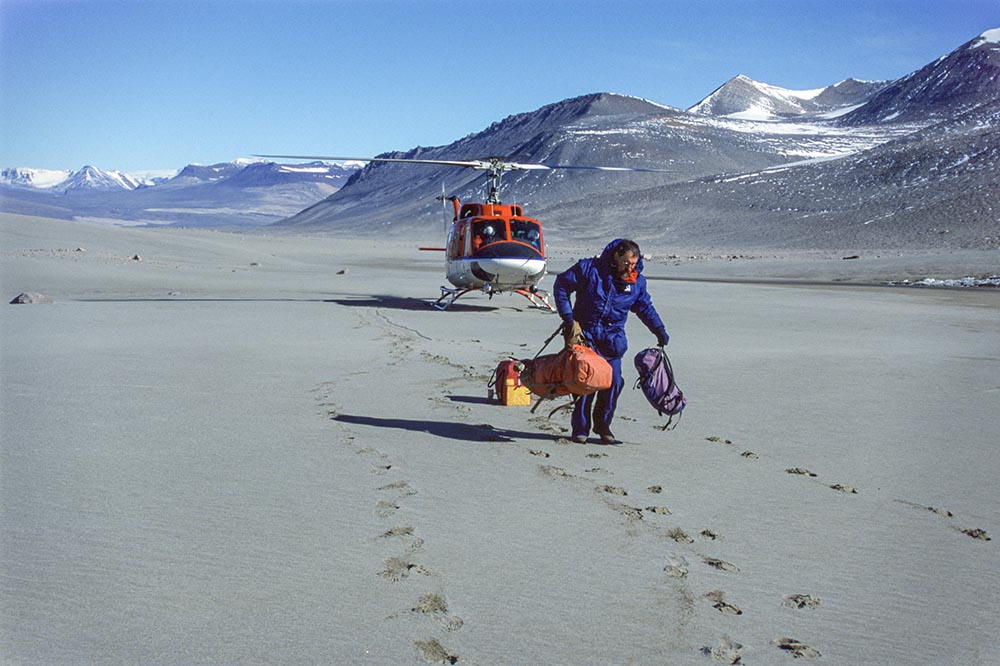
A landing by helicopter onto the wind-blown sandy surface of Victoria Valley. The view is looking westwards away from Victoria Lower Glacier, with the St Johnís Mountains on the right.
| 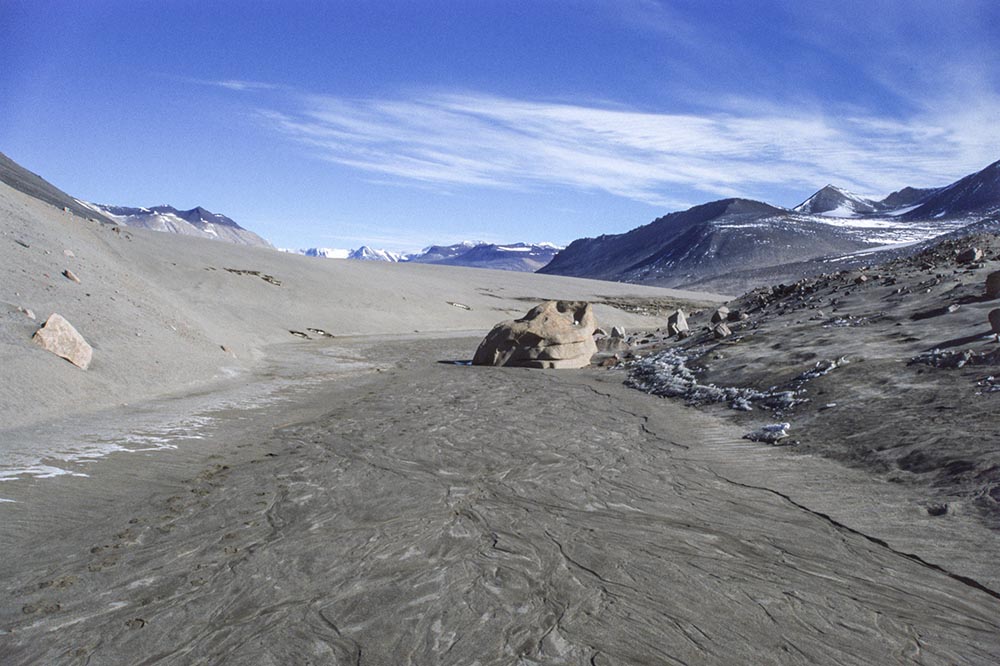
A braided stream channel in sand, created by run-off from sand-draped Victoria Lower Glacier. Scattered boulder have been reworked by the glacier from older moraine. Note how heavily the large boulder in the middle of the frame has been scoured by wind.
| 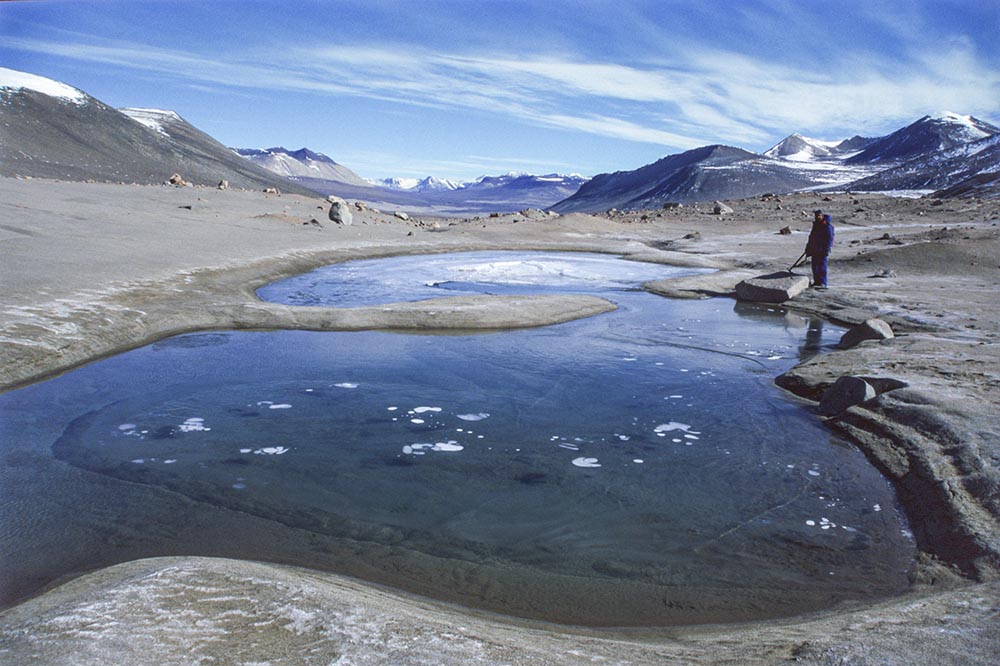
Ponds with meltwater sourced from glacier run-off have a carapace of ice amongst sandy boulder moraine near the true-left margin of Victoria Lower Glacier. Evaporation from the ponds has lowered the water-level, leaving a rim of white salts around the edge. View looking west (inland).
| 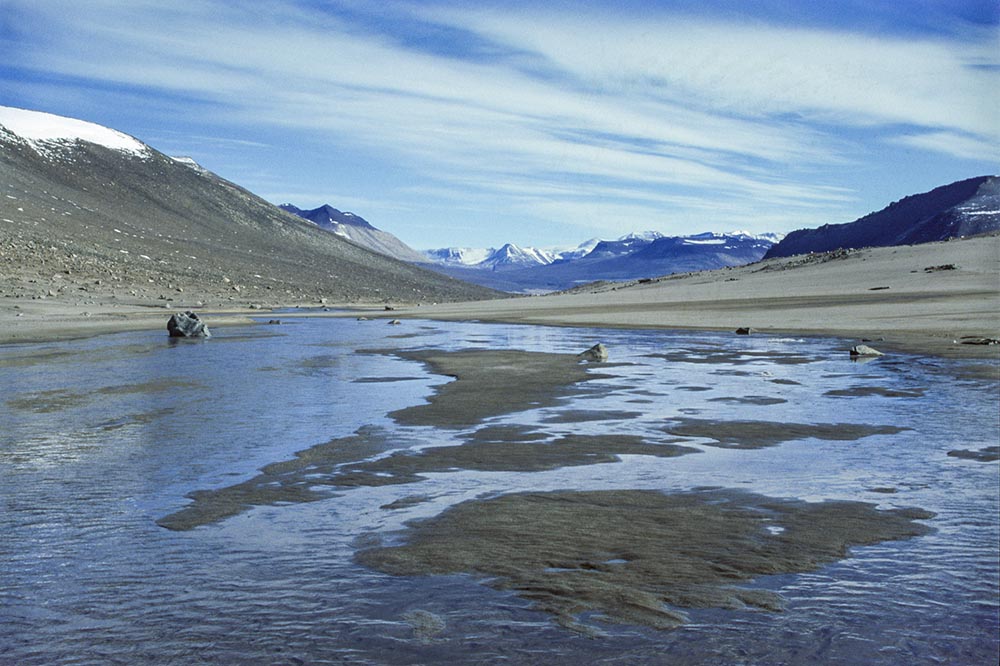
The main river flowing from Victoria Lower Glacier inland to Lake Vida. River bars of sand are exposed during this period of low flow. However, occasionally, high melt-rates generate a much higher discharge, capable of transporting substantial amounts of sediment.
|
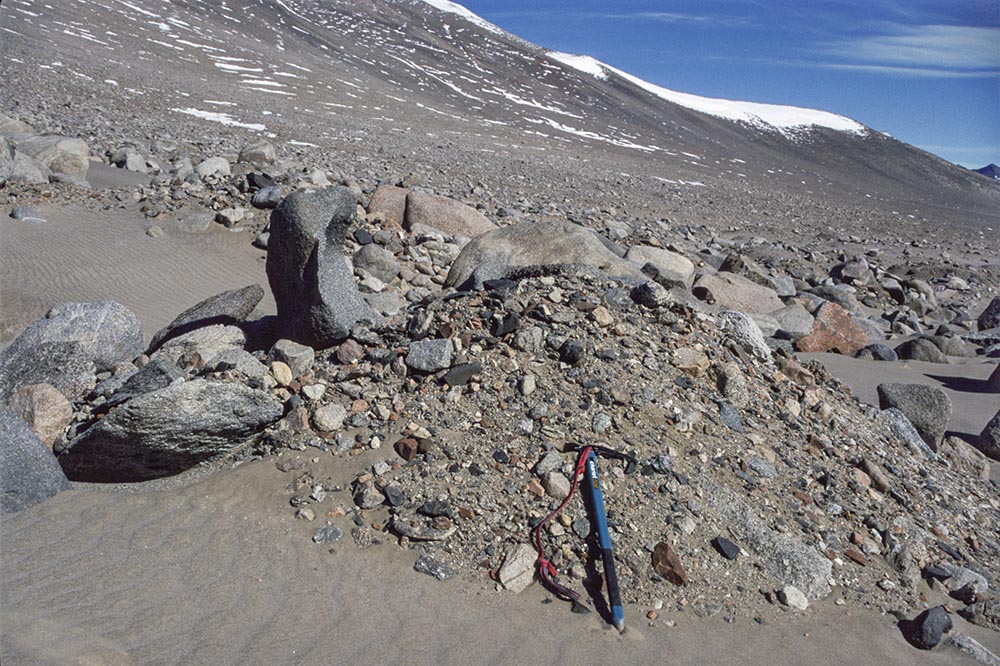
The sandy boulder texture of moraine deposits near the left margin of Victoria Lower Glacier. A wide range of lithologies are represented, including basement granites and gneisses, Permian Beacon Supergroup sandstones, and Jurassic Ferrar Dolerite. The upstanding dark-grey rock is dolerite, and has been subject to extreme wind abrasion, as indicated by the scalloped surface that faces inland, from whence powerful katabatic winds originate.
| 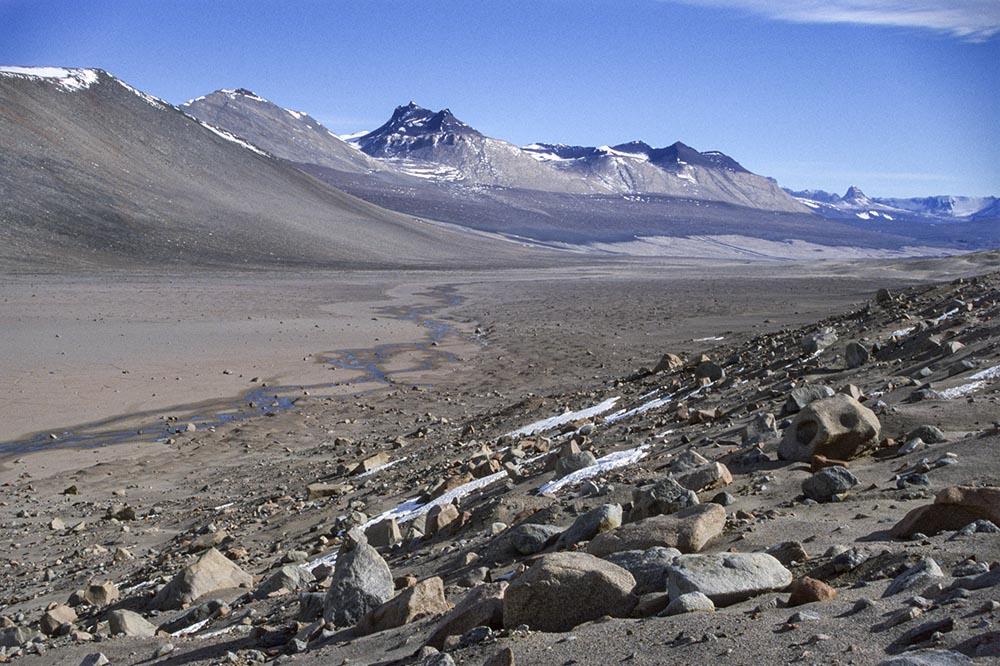
A view from the moraine at the right-lateral margin of Victoria Lower Glacier, looking towards the Olympus Range. The small river from this margin flows across a sandy plain, constrained by the spread of glacial deposits. The valley was calved out by wet-based glaciers at least a few million years ago, in the Pliocene Epoch or earlier.
| 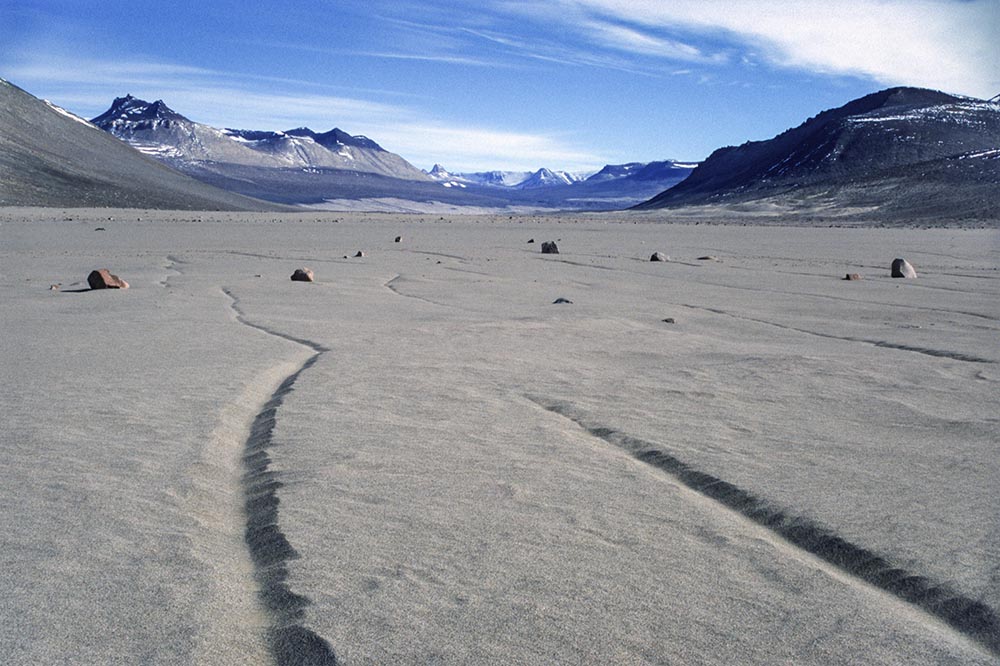
Periglacial frost-contraction cracks, filled with sand occur on the floor of Victoria Valley. These features probably requires hundreds of thousands of years to form. Scattered boulders suggest that, underlying the wind-blown sand, glacial drift (till) deposits are present. This view is towards Mt Olympus and the inner part of the valley.
| 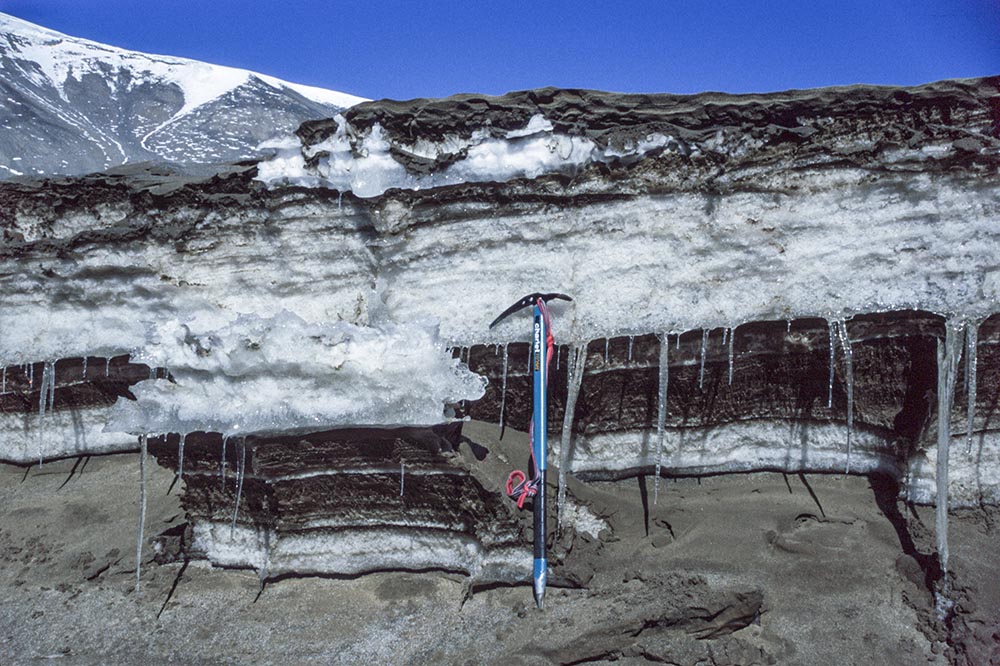
Snowbanks in meltwater channels can survive multiple seasons of ablation by being buried by wind-blown sand, as here, close to the left margin of Victoria Lower Glacier.
|
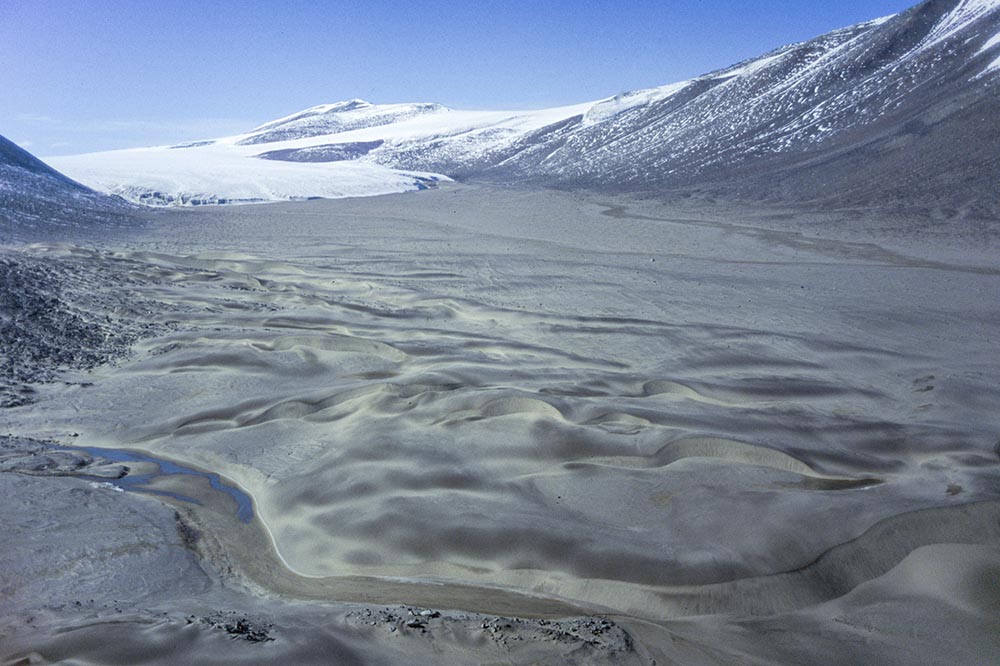
Barchan-type sand dunes in Victoria Valley, looking towards the glacier at the east end. These are the most extensive desert sand dunes in Antarctica.
| 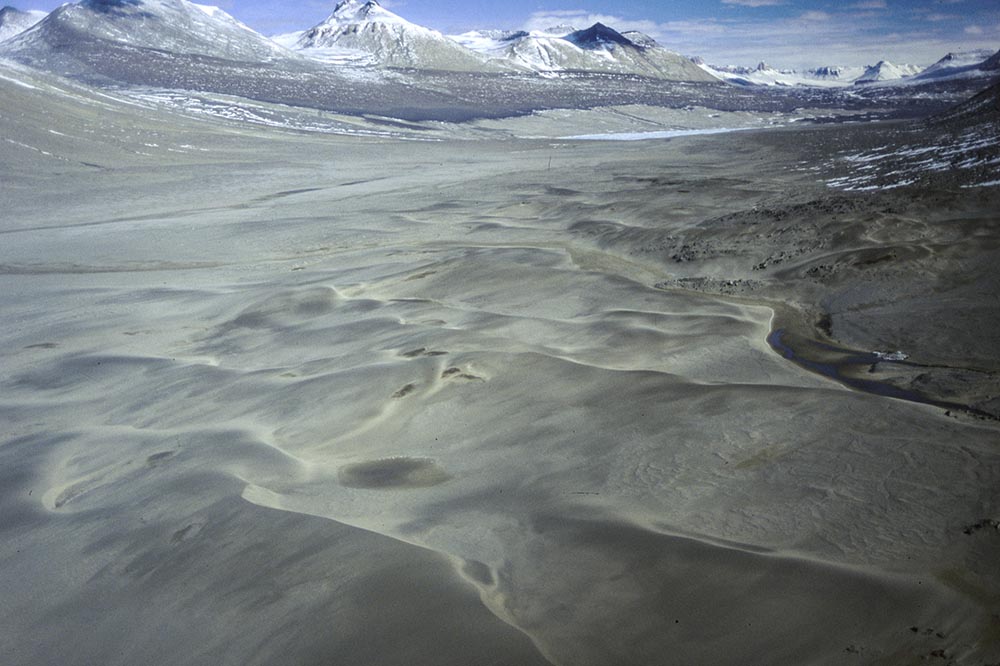
The same barchan-type sand dunes looking inland towards the Olympus Range.
| | |